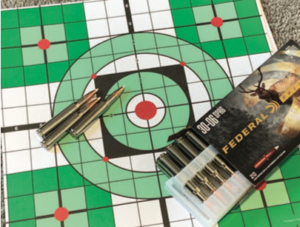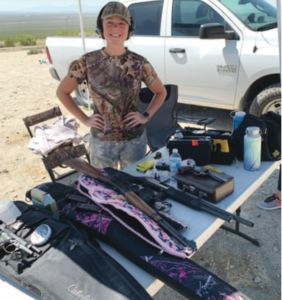
BY TIM HOVEY
We’ve all seen it. You walk into your local sporting goods store to grab some ammo and you’re met with blank stares from the sales clerk and empty shelves. The only indication that ammo did indeed once rest on these vacant shelves is the ever-present customer buying limit sign. Apart from keeping a spare shirt, hat and sunglasses in my car to disguise myself for possibly a second same day purchase — and believe me I’ve thought about — it seems we all have to adjust to this new ammo situation.
I’m sure we’ve all heard the possible varied reasons for the current state of the limited or unavailable ammo in the country. From a massive government conspiracy to additional civil unrest, it appears that every sportsman has an opinion on why ammo availability goes down and prices go up. What I believe is partially driving the shortage is simple; more people are buying firearms. Websites that track the increase in gun purchases have published that in the last 18 months, between 10 and 11 million new gun owners have purchased firearms. Even though this puts an additional strain on ammunition manufacturers, I view adding new gun owners to the fold as a good thing.

Regardless of why things have changed, shooters and hunters are definitely changing their shooting habits because of it. I’ve noticed that my target sessions are a lot shorter and quieter. I’ll admit it, at times I physically cringe after squeezing off a few shots at paper. Due to the current issues with ammunition availability, I have started sighting in my scoped rifles using what I call the two-shot method.
I first read about this method over two decades ago. I used it a few times and was thoroughly impressed with the results. However, I have a slight trigger-squeezing problem and eventually got the same zeroing-in results after burning through a box of ammo. Now I look at that box a lot differently and make sure cartridges are not wasted.
This technique is very simple and effective, however, for the best results it will take a steady bench and a rifle sled to keep your firearm as steady as possible. I have accomplished this technique successfully on the tailgate of a truck, but a shooting bench is obviously best.
The principle of using this two-shot method is modifying how you adjust your scope to what you see on the target. When ammo was plentiful, I would set my rifle in the sled, center the crosshairs on the target and careful squeeze off three shots. If the grouping was low and right, I would adjust the scope elevation up and the windage left. This means I’m adjusting the scope settings to compensate for the unaligned grouping. I then fire another three shots to confirm I have made enough of an adjustment. If the grouping is close to the bullseye, I call it good.

While the above-described scenario took only six shots to achieve, in reality it usually takes me quite a few more shots to zero in my firearm.
To prepare for zeroing in a rifle using the two-shot method, I place the rifle sled on a steady shooting bench. I then mount the rifle in the sled and tighten everything down. To achieve the best results using this method, it’s important that your firearm be as stable as possible and have limited movement during the initial shot.
As you would during any target session, center the crosshairs on the target. I prefer to use targets with marked increments to better verify the scope adjustments. Since almost all rifle scopes use an MOA adjustment of 1⁄4 inch at 100 yards, targets marked with one-inch increments work best for me.
With the crosshairs centered on the target and everything tightened up, squeeze off one shot. Due to recoil, you may find that the rifle has moved slightly from its original position after the shot. If this is the case, readjust the rifle and sled set up so the crosshairs are once again centered on the target. Now you’re ready to do some adjusting.
Let’s say your shot is once again low and right. Instead of adjusting your scope settings to compensate for the unaligned group like I described earlier, with this method you are adjusting the crosshairs to align with the single shot you just made. Looking through the scope and turning the windage and elevation adjustments, adjust the crosshairs so that they now align with the single hole in the target. You can actually watch the crosshairs move while you’re make these adjustments.
Once the crosshairs are now centered over the single hole in the paper, align the rifle and sled so that the crosshairs are again covering the center bullseye on the target. Since you aligned the scope with the single shot you’ve already taken, the rifle and scope are now lined up. With the crosshairs on the center of the target, take a second shot. This second shot should be zeroed in on the bullseye. You have just zeroed your rifle firing only two shots.
This sighting method is efficient and very effective. As long as you can mount the rifle in a sled on a steady bench and keep it relatively static during the initial shot, adjusting for your second shot is easy. And in these crazy times of ammo shortages and limited availability, keeping your firearms sighted in and accurate in the most inexpensive way possible becomes a factor we all have to think about



